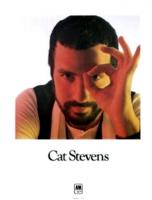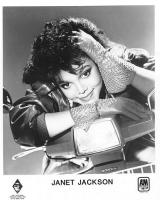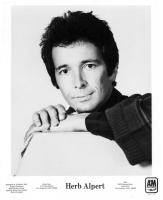Cat Stevens
"The first time I saw Cat Stevens was at [famous L.A. nightclub] the Troubadour. It was like, 'Holy shit, this guy is the real thing!' He was a unique, amazing artist that had that special 'hit' quality; he and his guitar just captured you with his songs. During 'Father and Son,' the audience stood up and gave him a standing ovation – in the middle of the song! People just didn't do that. He had tremendous appeal."--Herb Alpert
"'Tea for the Tillerman' absolutely exploded: it was a huge, amazing record. 'Tillerman' immediately went to Number One, and dominated both AM and FM radio. It was an incredible period, in the midst of the Vietnam War, with a country divided; the music played a big part in giving us some emotion about how we felt about what's going on. Cat Stevens songs like 'Wild World' really connected with that spirit: they occupied that space in a very important and influential way, but were also just so appealing. You could reside in 'Wild World' in a real sense."--Jerry Moss

Cat Stevens signing photo at A&M Records with Jerry Moss.
After its release in Britain in July 1970 A&M Records bought the Mona Bone Jakon album. At the time Cat Stevens was signed to Chris Blackwell's Island Records. The album peaked at #63 in Britain and failed to chart in the U.S. In 1970, "Lady D'Arbanville" peaked at #8 in Britain and #16 in Australia.
Tea for the Tillerman was released in December 1970. The album peaked at #2 in Australia, #8 in the U.S. and #20 in Britain. In both the U.S. and Canada, the album spent over a year on the chart. In 1971, Cat Stevens was ranked as the #4 Top Artist in Australia. His single "Father and Son" peaked at #24 on the chart and was ranked the #13 Top Single of the year. The single "Peace Train" peaked at #2 on the Australian chart.
"Wild World" was Cat Stevens first single in the U.S. It peaked at #11 on the Billboard Hot 100.
Tea for the Tillerman was ranked #206 on Rolling Stone's 500 Greatest Albums of All Time.
"For me [Tea For the Tillerman] represented a picture of childhood and childish wonderment. And I would say also the spirit of inquiry. I think that was the representative album of those kind of qualities and sensitivities. To me the childish picture on the front told the story....the album had the feel of being homemade. It wasn't overly produced, it was"minimalistic...there was a lot of space.....So I think that was one of those special milestone albums which conforms itself out of the blue and suddenly it's there."--Cat Stevens/Yusuf Islam, Goldmine December 1, 2000
Released in October 1971, Teaser and the Firecat peaked at #1 in Australia, #2 in the U.S., #3 in Britain. "Peace Train" was released as a single only in the U.S. and peaked at #7.
In 1972, "Morning Has Broken" peaked at #5 on the Australian singles chart and top ten in Britain and the U.S.
Catch Bull At Four peaked at #1 in Australia and the U.S and #2 in Britain. In 1973 the single "Sittin'" peaked at #28 in Australia.
Foreigner peaked at #2 in Australia. In Canada the album was on the chart a month before it was released. The release was delayed because Cat Stevens requested changes to the artwork. Stevens had artistic control over the art. However the delay happened after A&M Canada had placed television and print ads that showed the album and "The Hurt" was airing on radio. The ads and single caused substantial customer demand for it.
Buddah and the Chocolate Box peaked at #2 in Australia. In 1974 "Oh Very Young" peaked at #17 in Australia. "Another Saturday Night" was Top 20 in Britain and the U.S.
"[Buddah and the Chocolate Box] was a record where I tried to prove that I hadn't gone away. There were some familiar tones and sounds in the songs, but that album epitomized the paradox of my life at the time. I was standing between the life of an ascetic and the iife of a lover of the world, because I had a Buddah and a chocolate box." --Cat Stevens, Discoveries August 2000
Greatest Hits was released in 1975 peaking at #2 in Britain and #6 in the U.S. 1975 was also the year of a world tour.
In 1975 while visiting Jerry Moss' home, Stevens went for a swim in the Pacific Ocean. The ocean currents were strong and he almost drowned.
Cat Stevens first recording session in the U.S. was October 27, 1976 at Sound 80 Studios in Minneapolis, MN.
Numbers was released in 1976.
Izitso came out in 1977. On December 23, 1977 Cat Stevens adopted Islam as his religion and changed his name to Yusuf Islam.
The album cover art for Back to Earth, released in 1979, featured a verse from the Koran. The Malaysian government deemed it "a sign of disrespect for Islam" and directed that the distributor remove the verse from the album cover. About 150 copies of the record had been sold. The distributor withdrew the album from sale and asked the government to help in locating those copies.
Cat Stevens's song "If You Want to Sing Out Sing Out" was in the movie "Harold and Maude."
"I was lucky enough to have two record chiefs....who understood the importance of giving space to the artist, and that was Chris Blackwell of Island Records and Jerry Moss of A&M. Both of those people have similar qualities in that they understood that to get the best out of an artist, particularly people like me, it was best to give us freedom to explore our artistic ambitions and tastes."
"My belief in God became absolutely conformed when I read [the Koran]. And in a way it was a confirmation of all the things that I instinctively felt and also those things of which I had been brought up with through the Bible, through my Christian education and upbringing. Even things from my Buddhist journeying, this Koran was weaving it all together in a wonderful picture of unity and oneness....I never read in the Koran anything to do with music....What there were problems connected with lifestyle...I realized there was a problem with remaining in the [music] business and trying to purify my life and get myself on the right track....at that point I couldn't see any place for music at that time in my life. So that's when I sold my instruments for charity and walked off...I felt it was my chance to escape the limelight and get human again."--Cat Stevens/Yusuf Islam, Goldmine December 1, 2000
In 2014, the Australian Recording Industry Association ranked Teaser and the Firecat as its #13 album to stay in the Top 20. It stayed there for 17 weeks.
OFFICIAL PROMOTION BY A&M RECORDS
Greatest Hits New Music On A&M Records
Numbers New Music On A&M Records
Izitso New Music On A&M Records
Footsteps In the Dark Greatest Hits 2 liner notes
Footsteps In the Dark Greatest Hits 2 press release
Cat Stevens On A&M Records
Catch Bull At Four 50th Anniversary press release
Tea For the Tillerman--Reimagined 2020 press release
Cat Stevens biography 1977
Cat Stevens biography 1978
Tillerman and Teaser deluxe editions sellsheet
Official website: catstevens.com
Official autobiography: On the Road to Find Out by Cat Stevens
- Go-Set Charts
- Pre-Release Action For Stevens Album. RPM, July 28, 1973.
- Cat Stevens LP. Billboard, November 6, 1976.
- Cat Offends Malaysians. Christie Leo. Billboard, February 10, 1979.
- A&M Records' Greatest Hits. Matt Diehl. Rolling Stone, September 7, 2012.
































